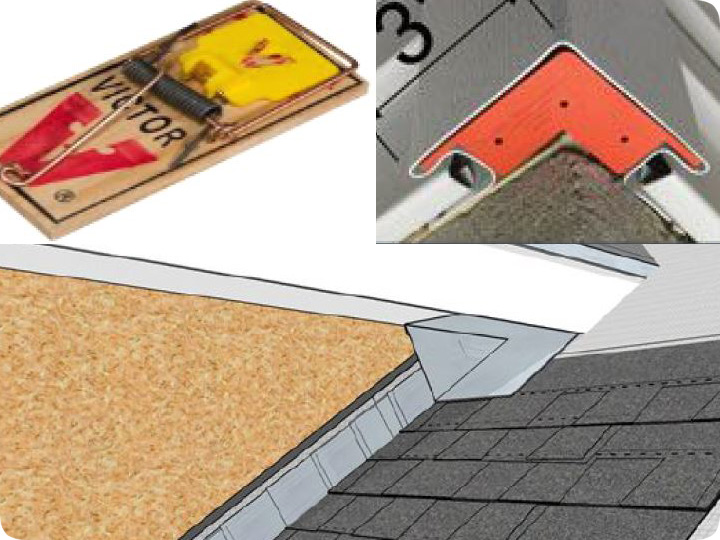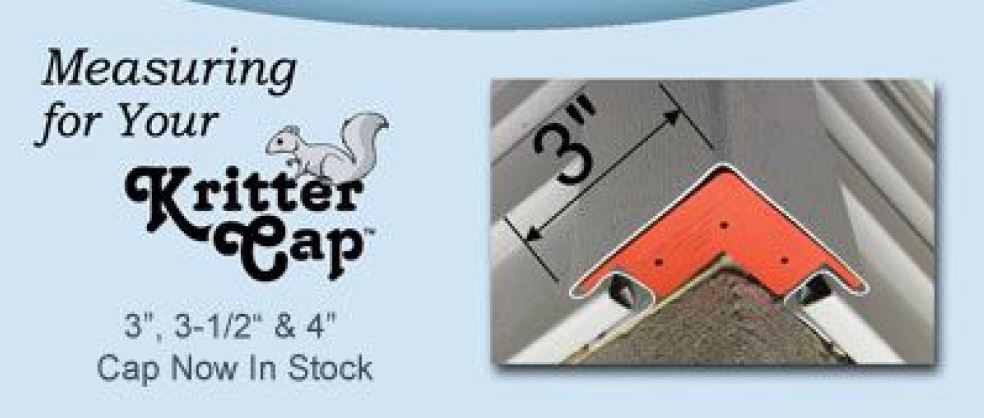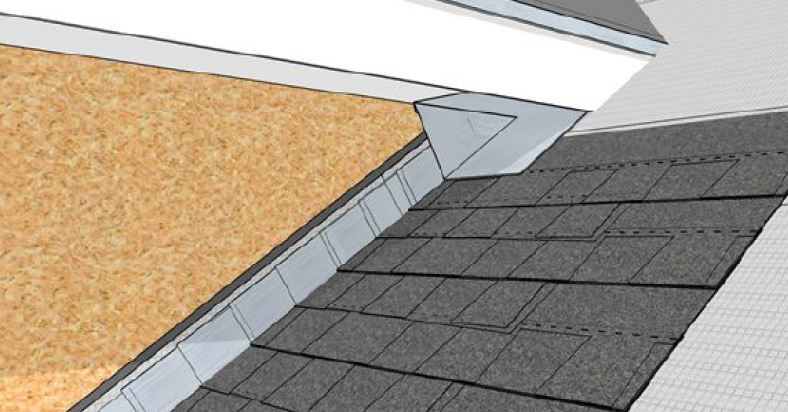-
info@aaanimalcontrol.com
Call us for help in your town
Humane Wildlife Education
Residential Home Mouse Problems

01.20.2020 - This article focuses on NWCO solutions for mouse infestation problems in home
constructions. Other creatures and construction types - condo, barn, industrial, etc., will
be covered in future articles. The mice species herein are the deer mouse, house
mouse and white footed mouse.
Attics can be havens for all sorts of creatures great and small. They find a quiet
environment not often visited by the humans below, if even at all. You need to inspect
the attic thoroughly. Attic access is through a hatch, pull down steps, or a staircase.
Mice must also have a way to get in the attic. This is the root of the problem, and must
be addressed or the problem will keep happening.
Mice build nests to raise young, shielded from the elements. They store food
brought in from the outside, or found inside the house. There will be soiling of insulation
and surfaces from urine and feces, chewing on wires and wood, destruction of insulated
ducts and other damage resulting in cost to replace or repair damage.
When mice infest attics there will be droppings, odor from urine and possibly the
odor from dead mice especially if rodent poison was used. Look for chewing of wires,
wood, and cardboard boxes. Look for disturbances to the insulation, visible trails and
discoloration. Lift thicker insulation that may be covering the evidence. An infestation
may be localized or present throughout the entire attic.
Mice are easily trapped with conventional wooden snap type mouse traps that
have the yellow plastic pan. Put a small amount (pea sized) of bait such as peanut
butter in the little square well.

Most situations are covered by setting a dozen or so traps
within the infested area. A trap that is not anchored with double sided tape or Hercules
putty may be carried off by squirrel, or a mouse caught by the tail. You will check these
sets on your next trip when you come to seal up the entry points, and fix any damage.
Next you will want to do an outside inspection to locate where mice may be
getting in. On a vinyl sided house, the bottom of the corner post is often found open,
which is a straight path to the attic for mice. Close this up with a Kritter Cap, or fill it with
copper mesh (Stuf-fit.)

Look at where the chimneys joins the house. Fill any small openings with caulk,
or copper mesh (Stuf-fit) and caulk. Larger openings may indicate structural damage
that could mean the chimney is pulling away from the house. This may need to be
stabilized which is a job for a chimney specialist.
Another common way for mice to get in is at defects in dormers. There may be a
small gap between the main roof and dormer soffit. If small enough it can be filled with
Stuf-fit. Larger openings need to have metal flashing installed which requires metal
bending skills. Any opening larger than your little finger needs to be closed.

Now that you have closed up the exterior, the next step is checking traps. Most
mice are caught on the first night so give it a few days before checking again.
Depending on the age and condition of the house, it may take a few trips to get it done.
Homes that were built over one hundred years ago, may have used the “balloon”
construction method which is a different topic.
We specialize in nuisance wildlife control - this is the field of removing unwanted wildlife from homes and property, and solving conflicts between people and wild animals. From home inspections to preventative repairs, wildlife trapping, attic cleanups and more, we solve
critter problems with professional expertise. Call me, David, or click on the below link to find any one of hundreds of wildlife trappers in every city and town in the US.
Do it yourself: Visit my How To Get Rid of Mice page for tips and advice.
Get professional help: Visit my Nationwide Pro Directory of wildlife removal experts.
For more wildlife stories, click my Wildlife Blog
or click my below banner to hire a local trapper.
Depending on where you live, it's common to see mice running about. Older homes are more susceptible to mouse problems, and if you live on a large area of land then you'll likely run into field mice. While they may be cute enough for some to own as pets, a wild mouse in your residential home is not the kind of pet you want to keep around.
There are many home mouse problems caused by these squealy rodents, ranging from major to minor. Be cautious and aware of what's going on in your home. If you have any inkling of a feeling that mice are running about, it's best to take care of them quickly.
Physical Home Mouse Problems
Mice love to chew and gnaw. A noticeable residential home mouse problem is chewed wires. Flickering lights, a TV that suspiciously stopped working, and fans that won't turn on are all possible symptoms of chewed wiring.
These little rodents also nibble on storage boxes and drywall. These are less noticeable but just as indicative of a mouse nest. They like to use these pieces to make nests, so if you see a bunch of chewed boxes or paper strips then it might be from a mouse trying to make a nest in your home.
Disease as a Residential Home Mouse Problem
Mice are known to spread diseases like salmonellosis, plague, and rat-bite fever. This is dangerous for you, your family, and your pets. One of the biggest issues with untreated home mouse problems is not the physical damage of your home but the damage to your health. It's best to stay safe and start looking into removal options as soon as you can, otherwise, you risk the health of your loved ones.
There's Never Just One Mouse
You may only see one mouse, but there are many more where it came from. Mice are not solitary creatures, they mate often and create nests wherever they go.
Arguably a larger mouse problem is not the number of mice, but the parasites that come with them. You can eliminate the home mouse population, but fleas, ticks, mites, and lice can stick around for much longer. They hop from mouse to person or pet. Soon enough, you'll have to call an exterminator to gas the house. Remove the mice as soon as possible to avoid the parasitic dangers they carry with them.
There are many movies that sympathize with mice, but in reality, mice are not using your kitchen to make 5-star meals. Residential home mouse problems are all too common. Focus on the dangers and try not to sympathize with the hope that they're not causing problems. It's your house, and you need to protect it.




















